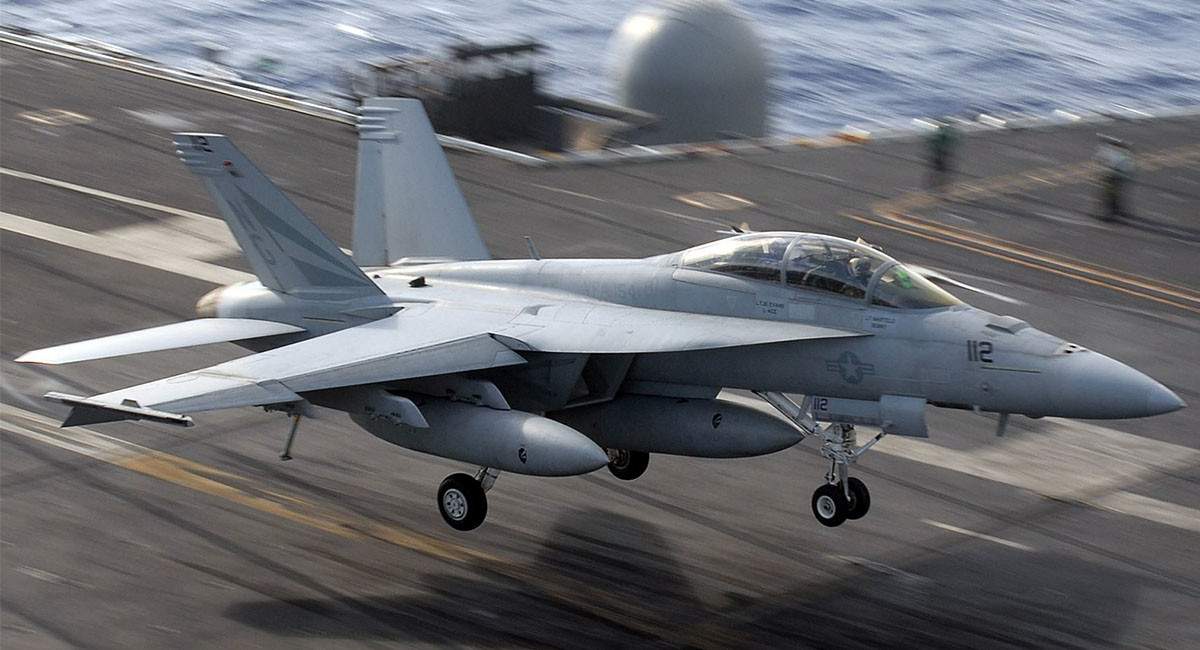Home » Military Aircraft » Modern Aircraft » Boeing F/A-18E/F Super Hornet, EA-18G Growler

Boeing F/A-18E/F Super Hornet, EA-18G Growler
Role: MULTIROLE FIGHTER | Period: MODERN AIRCRAFT | Nation: USA
Category: Naval multirole fighter, Electronic warfare aircraft, Tanker aircraft
Crew: 1 / 2
Engine: Two turbofan engines
Manufacturer: Boeing Defense, Space & Security (formerly McDonnell Douglas) Defense, Space & Security
Number built: more than 600 ( approx. 150 in the EA-18G variant)
First flight: 29 November 1995 (2006 EA-18G variant)
Introduction: 15 January 1999 (2009 EA-18G variant)
Users: USA (US Navy), Australia (Royal Australian Air Force)
The F/A-18 Super Hornet is a single-seat or two-seat, twin-engine, Carrier-based multi-role fighter. With the end of the Cold War came the need for budget cuts and restructuring of the US Navy, along with the need to replace the now obsolete A-6 Intruder and F-14 Tomcat. With the completion of the A-12 Avenger II stealth fighter development program, a decision had to be made whether to continue to modernize these aircraft or replace them with a new generation of McDonnell Douglas’ successful F/A-18 Hornet. This option was accepted by the US Navy on May 12, 1992. This multi-role aircraft, after its full entry into service, was capable of performing tasks in the US Navy that previously required several specialized aircraft.
The Super Hornet is a largely new aircraft that is approximately 20% larger than the F/A-18 Hornet, has a 15,000 lb (6,800 kg) greater maximum weight, has 41% greater range, and has an endurance increase of 50%. The aircraft has stealth features where the radar cross section of the aircraft has been significantly reduced and the rounded portions of the aircraft have been given an angular shape. Of course, there are new avionics, radar and more powerful engines. The aircraft can share information about the enemy and their positions and can fire on enemy aircraft that have been targeted by another friendly aircraft. Autopilot allows automatic landing on the aircraft carrier.
The aircraft has a maximum takeoff weight of 66,000 lb (29,937 kg) and an ammunition load of up to 17,750 lb (8,050 kg). Carrier bringback payload can be up to 9,900 lb (4,491 kg). Top speed is Mach 1.6 (1,190 mph / 1,915 km/h), ceiling is over 50,000 ft (15,000 m), and range can be up to 2,070 miles (3,330 km), combat range up to 449 miles (722 km).
The aircraft’s armament includes the internal 20 mm M61A2 rotary cannon, air-to-air missiles, guided and unguided air-to-ground missiles, and various types of bombs. The aircraft can also be fitted with AGM-158 JASSM cruise missiles or glide munitions such as the AGM-154 JSOW.
Super Hornet Variants
- F/A-18E – single-seat version
- F/A-18F – two-seat version
- EA-18G Growler – electronic warfare version
The first single-seat F/A-18E1 prototype flew on 29 November 1995 and the first two-seat F/A-18F1 prototype flew on 1 April 1996. The first F/A-18E Super Hornet was inducted into the U.S. Navy on January 15, 1999, at Naval Air Station Lemoore. The first operational carrier deployment occurred on 24 July 2002 (USS Abraham Lincoln). Series production began in 1997, which was also the date of the merger of McDonnell Douglas and Boeing. On 15 August 2006, the dedicated electronic warfare version EA-18G made its maiden flight.
The F/A-18E is a single-seat version, has a slightly longer range and can carry more weapons. The F/A-18F has an added second seat for the weapons systems operator and is used for training and for high workload missions where a second crew member can help share the load. In other parameters, the two variants are identical.
In 2009, the EA-18G Growler electronic warfare version entered US Navy service, replacing the Northrop Grumman EA-6B Prowler. The EF/A-18G is a two-seat aircraft that shares more than 90% of its features with the Super Hornet and is based on the F/A-18F version. Instead of an integrated gun, it has specialized electronic warfare equipment also located on the wingtips. The aircraft can be equipped with the AGM-88 HARM air-to-air anti-radiation missile and various high band jamming pods and low band jamming pods.
The F/A-18 Super Hornet can also be used as an airborne tanker by adding an external air-to-air refueling system. This role was taken over from the retired KA-6D and S-3B Viking tankers.
Main operational service
- War in Afghanistan (2001-2021) – since 2006
- Iraq War (2003-2011) – since 2006
- Syrian Civil War (2012 – present) – since 2014
- International military intervention against the Islamic State (2014 – present) – since 2014
- First Libyan Civil War (2011)
The F/A-18E/F Super Hornet was operationally deployed primarily for attacks on ground targets. In Operations Iraqi Freedom (Iraq War) since 2006, it has been deployed in the role of close air support, suppression of enemy air defenses, escort and aerial refueling sorties.
In War in Afghanistan, he deployed in 2006 as part of Operation Enduring Freedom.
Since 2014, U.S. and Australian aircraft have been deployed in International military intervention against the Islamic State (2014-present).
In the Syrian Civil War, it was deployed as part of American-led intervention (2014 – 2021). During this operation, the F-18E Super Hornet scored its first aerial victory when it shot down a Syrian Su-22 fighter-bomber with an AIM-120 AMRAAM radar-guided missile.
In 2011, the EA-18G Growler made its first combat deployment in Operation Odyssey Dawn (2011), to secure a no-fly zone in Libya.
In 2021, the U.S. Navy’s famed Blue Angels flight demonstration squadron transitioned to the F/A-18E/F Super Hornet type while celebrating its 75th anniversary.